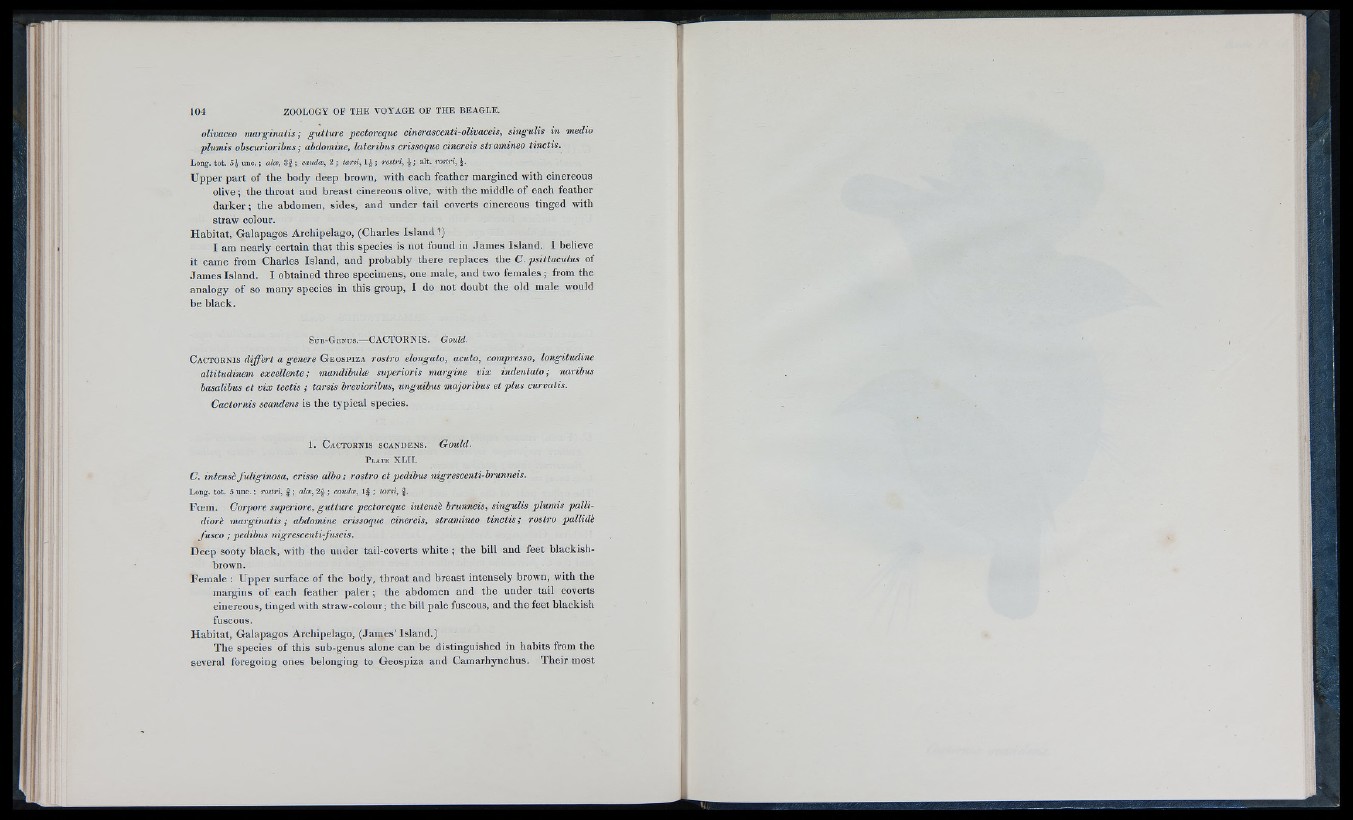
oliváceo marginatis; gutture pectoreque cinerascenti-olivaceis, smgulis in medio
plumis obscurioribus ; abdomine, lateribus crissoque ciñereis stramineo tinctis.
Long. tot. 5 f unc. ; al<s, 3 | ; caudæ, 2 ; tarsi, 1-f; rostri, f ; alt. rostri, f.
Upper part of the body deep brown, with each feather margined with cinereous
olive ; the throat and breast cinereous olive, with the middle of each feather
darker ; the abdomen, sides, and under tail coverts cinereous tinged with
straw colour.
Habitat, Galapagos Archipelago, (Charles Island?)
I am nearly certain that this species is not found in James Island. I believe
it came from Charles Island, and probably there replaces the C. psittaculus of
James Island. I obtained three specimens, one male, and two females ; from the
analogy of so many species in this group, I do not doubt the old male would
be black.
S u b - G e n u s .— CACTORNIS. Gould.
C a c t o r n i s differì a genere G e o s p i z a rostro elongaio, acuto, compresso,
altitudinem excellente; mandibuloe superioris margine vix indentato; naribus
basalibus et vix tectis ; tarsis brevioribus, unguibus majoribus et plus curvatis.
Cactornis scandens is the typical species.
1 . C a c t o r n i s s c a n d e n s . Gould.
P l a t e X L II.
C. intensè fuliginosa, crisso albo; rostro et pedibus nigrescenti-brunneis.
J.ong. tot. 5 unc. ; rostri, | ; aloe, 2|-j caudæ, ; tarsi, | .
Foem. Corpore superiore, gutture pectoreque intensè brxinneis, singulis plumis palli-
diorè marginatis; abdomine crissoqiie ciñereis, stramineo tinctis; rostro pallidè
fusco ; pedibus nigrescenti fuscis.
Deep sooty black, with the under tail-coverts white ; the bill and feet blackish-
brown.
Female : Upper surface of the body, throat and breast intensely brown, with the
margins of each feather paler ; the abdomen and the under tail coverts
cinereous, tinged with straw-colour; the bill pale fuscous, and the feet blackish
fuscous.
Habitat, Galapagos Archipelago, (James’ Island.)
The species of this sub-genus alone can be distinguished in liabits from the
several foregoing ones belonging to Geospiza and Camarhynchus. Their most